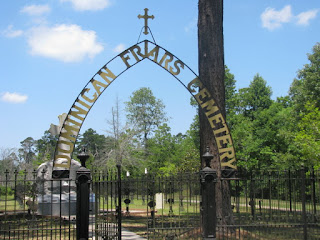On this day, in the 1962 Dominican Rite Calendar, we celebrate the Feast of SS. John of Cologne, O.P., and companions, the Martyr's of Gorcum. The feast is III Class, so the Ordinary Office is prayed according to the rubrics. This feast is one of those III Class feasts where most of what is needed is provided in the Proper of the Saints. At Pretiosa, the obit of Fr. Thomas Hyacinth Cipolletti of Ascoli, 70th Master General of the Order, is made.
Breviarium S.O.P.
Celebrating the liturgical traditions of the Order of Preachers.
Wednesday, July 9, 2025
July 9: SS. John, O.P., and Companions , Mm., III Cl.
Monday, July 7, 2025
July 7: Blessed Benedict XI, Pope, Confessor, O.P., Commemoration
 Today, in the 1962 Dominican Rite Calendar, we celebrate the commemoration of Blessed Benedict XI, one of the four Dominican Popes. From “Short Lives of the Dominican Saints” (London, Kegan Paul, Trench, and Trübner & Co., Ltd., 1901).
Today, in the 1962 Dominican Rite Calendar, we celebrate the commemoration of Blessed Benedict XI, one of the four Dominican Popes. From “Short Lives of the Dominican Saints” (London, Kegan Paul, Trench, and Trübner & Co., Ltd., 1901).
Sunday, July 6, 2025
July 6: Anniversary Of Those Buried In Our Cemetaries
On this day, in the 1962 Dominican Rite Calendar, the anniversary of those buried in the cemeteries of the Order are remembered.
Saturday, June 28, 2025
June 28: Vigil of Sts. Peter & Paul - Domine Quo Vadis?
"In the old Carmelite breviary, which St. Teresa would have used, the Antiphon of the Magnificat at 1st Vespers on June 29 runs "The Blessed Apostle Peter saw Christ coming to meet him. Adoring Him, he said: 'Lord, whither goest Thou?' ' I am going to Rome to be crucified afresh.'" The story has it that St. Peter returned to Rome and was crucified.
Beátus Petrus Apóstolus vidit sibi Christum occúrrere, et adórans eum ait: Dómine, quo vadis? Vénio Romam íterum crucifígi. | The blessed apostle Peter saw Christ coming towards him, and adoring him, said, “Lord, where are you going?” “I go to Rome to be crucified again.” |
Saturday, May 24, 2025
May 24: Translation of Our Holy Father St. Dominic, III Class
Today, in the 1962 Dominican Rite Calendar, we celebrate the feast of the Translation of the Relics of Our Holy Father St. Dominic. This is one of the three (3) traditional feast days in the Dominican calendar that were dedicated to our holy Father St. Dominic. The other two being his feast day (August 4) and the miraculous appearance of a painting attributed to him at the Convent of San Domenico in Soriano Calabria in 1530 (feast day September 15 in the 1909 calendar, and September 25 in later calendars).
Thursday, May 22, 2025
LOST FEAST: May 22: St. Servatius, B.,C., Protector of the Order
Tuesday, May 13, 2025
May 13: Blessed Imelda, V., O.P., Comm.
Today, in the 1962 Dominican Rite Calendar, we celebrate the feast of Blessed Imelda Lambertini, virgin, of the Order of Preachers. The ferial office of Eastertide is prayed, and a commemoration is made of Blessed Imelda at Lauds only.





